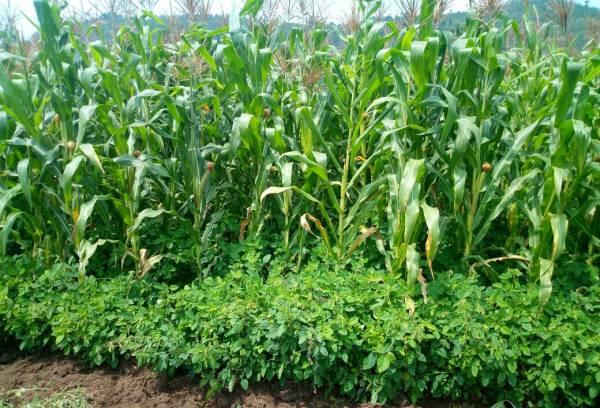
By Jejje Muhinde;
Maize, rice, beans, sorghum, and millet are some of the staple crops grown by most farmers in Rwanda.
However, the production of these crops is hugely constrained by erratic weather patterns, parasitic weeds, and destructive pests that completely destroy these crops.
The impact of pests and weeds not only affects the livelihoods of smallholder farmers in Rwanda but also household incomes hence living under poverty.
One of the common responses used by farmers to deal with these pests and weeds is the use of spraying chemical pesticides but; these are often polluting the eco-system and leaching into water supplies.
The problem with agrochemicals is that they seep through the soil into the groundwater and contaminate water sources.
To deal with these challenges, farmers in Rwanda’s Eastern Province are exploring a new affordable solution called ‘Push-Pull technology’ (PPT) while increasing soil fertility.
The eco-friendly technology was first started at International Center of Insects Physiology and Ecology (ICIPE) at Lake Victoria in Kenya in the late 1990’s.
According to Eugene Rwibasira, the Executive Secretary of Rwanda Development Organization (RDO), a local NGO that supports farmers, the technology has been around in Rwanda for three years with research conducted in Gatisbo district, Eastern Province.
The pilot tests carried out in Gatsibo have also found that employing Push-Pull has improved yields and the income of farmers and increased soil fertility.
Push-Pull involves intercropping cereal crops with insect-repelling legumes of the desmodium genus, and then planting attractive forage plants such as brachiaria grass as a border to the crops garden.
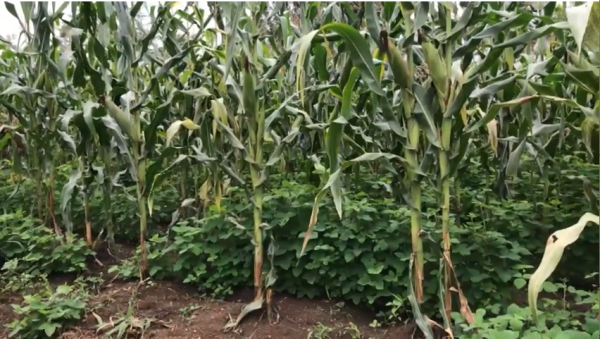
Push-Pull technology is used in maize crops to eradicate stemborer while increasing harvest as well as soil yeilds
“The intercrop emits a blend of compounds that repel, or “push” away, the pests, while the border plants emit compound that are attractive to the pests, or “pull” them toward the border,” Rwibasira explains.
For instance, maize farmers always face pests like Striga weeds and stemborer moth, these pests can destroy on average 20–40% but can reach 80% if not controlled, according to Jeanne d’ Arc Nyaruyonga, Director of AGRAH CARE, an agricultural product wholesaler.
Striga kills maize plants by attaching itself to the roots of host maize and drains all nutrition from it thus stunting the crop growth, sometimes killing it outright.
While stemborer, an insect larva that feeds on leaves of maize goes on to bore into maize stems.
Climate-smart technologies can be applied to clear these pests; however, Rachel Owino technology transfer officer at the International Centre of Insect Physiology and Ecology (ICIPE) warns the better farming methods must be managed well in order to enjoy the benefits of the technology
“If proper agronomic practices are not followed, the farmers will not benefit from the Push-Pull technologies,” Owino explains.
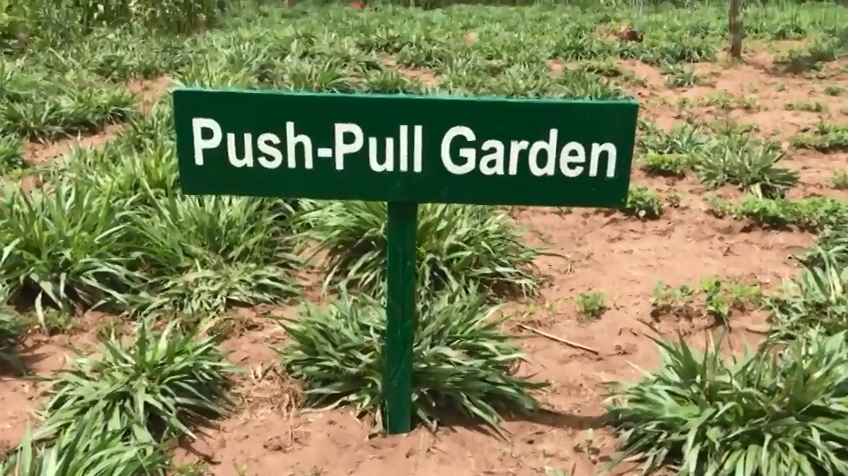
How does the technology work?
Firstly, farmers start by clearing their land during the dry season. They then plough and harrow the land to fine soil practices before the onset of rains.
Farmers then plant maize or sorghum about 3 to 4 inches apart in rows. In between, they plant desmodium. For one acre of land 1kg of desmodium seed is needed.
Planting desmodium in rows of 75cms, it produces a scent or odor that stemborer moths do not like. The smell repels away the moths from the maize crop, hence the Push part.
After 3 to 6 weeks, it is advisable to trim the desmodium so that it does not overgrow in between the maize plants.
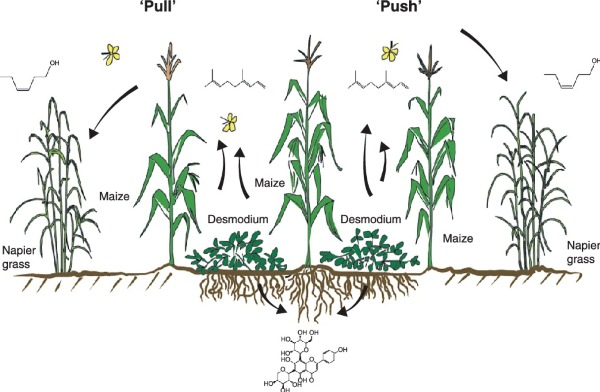
On the other hand, demarcate your field to plant 3 rows of Napier grass around the border of the maize field as a trap plant. Napier is more attractive to moths than maize.
The grass ‘pulls’ the moths to lay their eggs on it, and when they hatch, the plant produces a sticky substance like gum which traps them, and unable to survive, they die.
So, very few stem borer larvae survive and the maize is saved because of the ‘push-pull’ strategy.
It is advisable to plant at least 3 rows of Napier grass around the maize field in the first year. Farmers are also instructed to apply 2 handfuls of well-decomposed farmyard manure in each hole.
After harvesting the maize crop, desmodium can either be; harvested as forage to feed livestock or it can be left to produce seed before it is harvested for forage.
Jean Baptiste Senzoga a resident of Gatoki sector in Gatsibo district has been battling stem borers for years.
In 2020, he began practicing Push-Pull technology; his maize harvest for the last seasons significantly improved twice as much from the first pilot trial, he harvested 230 kilograms and this increased to 380 kilograms the next harvest.
Senzoga underlines that the innovation has helped him control pests, and increased his maize yields for household consumption.
Smallholder maize farmers like Marie Claire Minyoni in eastern Rwanda used to spend hours picking warms, this technology is saving her time with increase in her maize harvest.
The 52-year-old explains that she used to harvest around 90kilograms, but after using the technology, the harvest more than doubled to 200kilograms.
“We consume some of the harvests; sell seedlings to neighbors to raise additional income to pay school fees for my two children.” She noted.
Apart from good maize yields, Push and pull technology offers benefits to farmers with dairy cows as they get forage from desmodium and Napier grass.
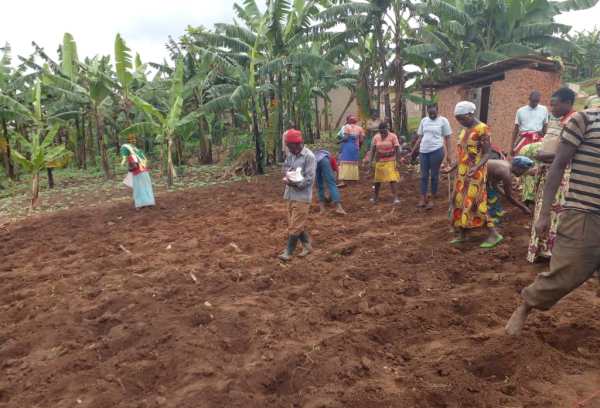
Senzoga explains that the desmodium and Napier grass are both high-quality and nourishing animal fodder plants.
Minyoni, who looks after her two granddaughters explains that, her livestock yields have improved her economic situation and milk yields have doubled to 20 liters per day.
“I sell the extra milk to neighbors earning Rwf.90,000(around US$90) a month. I also reserve some milk for my grandchildren to improve their nutrition. This year, I managed to buy two piglets,” She affirmed
While intercropping prevents the spread of Striga and other weeds, with two cows and his four goats, Felix Hitayezu from Gihanga sector in Gatsibo district started using the technology in 2021, and it has benefited him with a steady income by selling surplus grains, milk and fodder.
According to paper research on the technology conducted in 2019, there are some 61,800 smallholders in Kenya, Tanzania, Uganda, and Ethiopia practicing push and pull technology and because it is labor-saving, adoption is particularly evident among women farmers.
In addition, an independent impact assessment of push-pull conducted in 2009 to establish its impact on the livelihoods of smallholder farmers, found that it contributed significantly to reducing the vulnerability of farm families by ensuring higher and better yield stability.
“We’re experimenting and adapting Push-Pull technology to support maize farmers so that they can increase productivity without harming the environment.”Jean d’Arc Nyaruyonga notes.
“In Rwanda, we have a problem of armyworms,” Nyaruyonga says adding that, “It is a challenge to farmers since they either can’t purchase the pesticides due to lack of money, or the pesticides are not available contributing to low yields.”
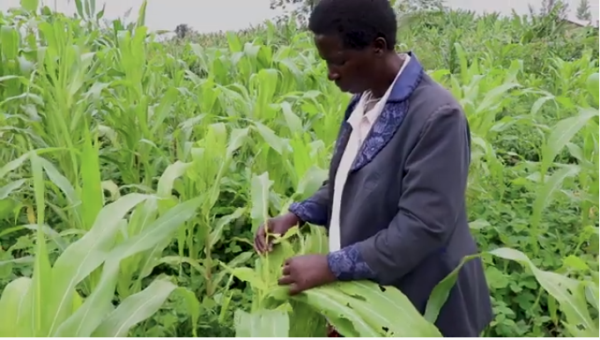
Farmers who are affected by armywarms spend time picking out the warms by hands
Léon Fidele Mugisha an agriculture and food expert points out that Push-Pull technology is yielding benefits. “The technology has benefits to farmers since desmodium increases soil fertility while brachiaria grass can increase milk yields.”
However, Mugisha adds that it is still an experiment that has questions to be answered.
He underlines that more research and demonstrations need to be conducted to get more information before the technology is formally approved.
Chantal Uwiringiyimana a farmer from the Kageyo sector, in Gatsibo says that the reason why she has not adopted the technology is that it is not all that easy given the small size of her land.
“The technology is labor-intensive in nature especially during the first season of land preparation, planting, weeding, trimming and cutting down of desmondium and Napier grass,” She adds that much needs to be done through research and training of smallholder farmers in order to scale up adoption.
There is also the high cost of desmondium seeds ranging between Rwf.44,183 (estimated US$43) per kilogram which is costly to smallholder farmers. The seeds are not sufficient and easily available in Rwanda since they’re not produced locally.
The other problem is the lack of available large quantities of good quality desmondium seeds, which in turn is the major cause of the limited spread of this technology.
Farmers claim that seeds, are not more accessible, there is also lack of partnership with private sector companies and stockiest to create a viable commercial seed production system.
Prof. Zeyaur Khan, a Principal Scientist at ICIPE says that the other biggest problem is the change in climate, the selected Silver leaf desmodium and Napier grass which is not able to withstand the long drought and hot climate. (End)
